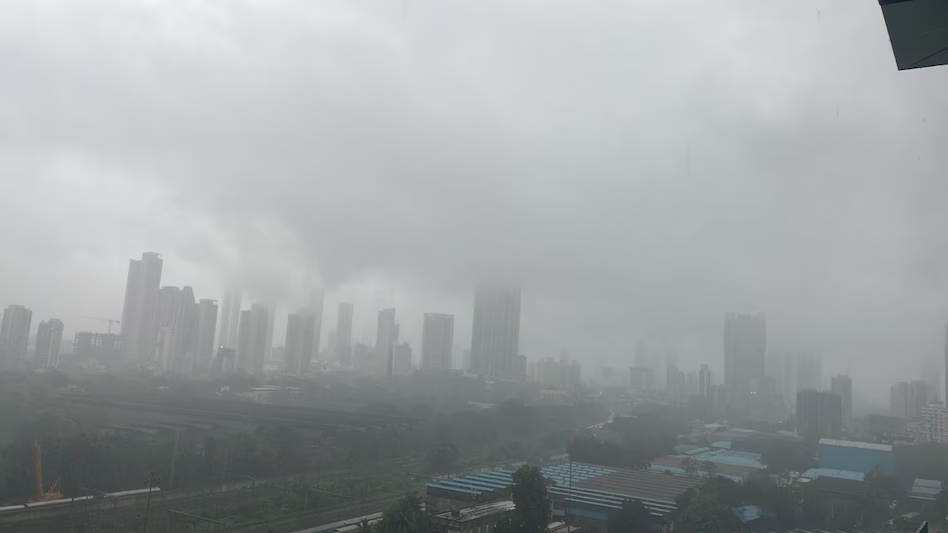Introduction: A Crisis Unfolding
Maharashtra is currently facing a severe weather emergency as the Indian Meteorological Department (IMD) has issued a Red Alert for Mumbai, Palghar, and Pune. The alert, prompted by an unusual surge in rainfall, signifies a high risk of disruption due to the intensity and volume of precipitation. This article provides an in-depth look at Maharashtra weather, covering the latest developments, expert opinions, and emergency measures.

Understanding the Red Alert: Implications and Risks
A Red Alert represents the highest level of warning issued by the IMD, indicating extreme weather conditions with a potential to cause significant damage and disruption. For Mumbai, Palghar, and Pune, this alert means:
- Heavy to Extremely Heavy Rainfall: Anticipated rainfall exceeding 204 mm in a 24-hour period, which could lead to extensive flooding.
- Potential Hazards: Increased risk of landslides, severe waterlogging, and damage to infrastructure.
- Public Safety Measures: Advisories are in place urging residents to stay indoors, avoid travel, and prepare for potential evacuations.
The alert underscores the seriousness of the weather conditions and the need for immediate action to mitigate impacts.
Recent Weather Patterns: Analyzing the Downpour
Over the past week, Maharashtra has witnessed an alarming increase in rainfall due to a low-pressure system that intensified rapidly in the Arabian Sea. This system has led to:
- Unprecedented Rainfall: Coastal areas, particularly Mumbai and Palghar, have experienced rainfall levels that are significantly above normal for this time of year.
- Flooding and Infrastructure Strain: Major roads in Mumbai, including the Eastern and Western Express Highways, are submerged, and public transport services have been severely disrupted.
This heightened precipitation is also linked to seasonal monsoon variations, which have been exacerbated by climatic factors and atmospheric conditions.
Government and Local Response: Measures in Place
In response to the Red Alert, the Maharashtra government has implemented several measures to manage the crisis:
- Emergency Response Teams: Additional personnel and resources have been deployed to assist with evacuation, rescue, and relief operations.
- Public Communication: Continuous updates are being disseminated through media channels and social media to keep residents informed about safety protocols and weather conditions.
- Infrastructure Inspections: Authorities are conducting thorough checks of critical infrastructure such as bridges and drainage systems to ensure they can handle the current conditions.
Local municipalities have also set up control rooms to coordinate emergency responses and manage public safety.
Expert Opinions: Insights from Meteorologists and Emergency Responders
To provide a comprehensive understanding of the situation, we sought insights from several experts in meteorology and emergency response:
Dr. Anil Deshmukh, Senior Meteorologist at IMD: “The ongoing weather event is one of the most severe we’ve encountered this monsoon season. The low-pressure system has intensified more than expected, leading to these extreme rainfall patterns.”
Dr. Priya Kapoor, Weather Analyst at Pune University: “We are expecting the heavy rainfall to persist for at least another 24 to 48 hours. Residents need to stay alert and follow all safety advisories to avoid accidents and health issues.”
Rajesh Bhardwaj, Emergency Response Specialist: “Our teams are working around the clock to manage the crisis. It’s essential for the public to cooperate with evacuation plans and stay informed about the latest developments.”
Professor Neha Sharma, Climatologist at the Indian Institute of Tropical Meteorology: “The current weather conditions highlight the increasing unpredictability of monsoon patterns. Climate change is likely playing a role in the intensity and frequency of such extreme weather events.”
Timeline of Key Events: Tracking the Crisis
- August 22, 2024: A low-pressure system forms in the Arabian Sea, leading to increased weather activity.
- August 24, 2024: IMD issues preliminary warnings for heavy rainfall in coastal Maharashtra.
- August 26, 2024: A Red Alert is issued for Mumbai, Palghar, and Pune due to severe rainfall and potential flooding.
Latest Updates: Ongoing Developments
As of August 26, 2024, the weather situation continues to evolve. The IMD has updated its forecasts to reflect the ongoing severity of the conditions. The government has expanded its emergency measures to address the impacts of the heavy rainfall, including additional relief centers and increased coordination with local authorities.
Recent Developments:
- Increased Rainfall: Rainfall levels have surpassed initial estimates, causing further flooding in affected areas.
- Public Safety Alerts: New advisories are being issued to ensure public safety and manage traffic disruptions.
Conclusion: Navigating the Weather Crisis
The current weather crisis in Maharashtra presents a serious challenge for both residents and authorities. With the IMD’s Red Alert signaling extreme weather conditions, the situation requires coordinated emergency responses and public adherence to safety guidelines. As the state continues to manage the impacts of this severe rainfall, staying informed and prepared will be crucial for minimizing risks and ensuring community safety.
For Regular News and Updates Follow – Sentinel eGazette
External Sources
FAQs
- What is the current weather alert status in Maharashtra?
- Maharashtra is currently under a yellow alert for Mumbai and Palghar, and a red alert for Pune. This means heavy rainfall and possible flooding are expected in these regions.
- How does a red alert differ from a yellow alert?
- A red alert indicates severe weather conditions with a high likelihood of significant impact, including flooding and landslides. A yellow alert warns of potential weather hazards that could become severe.
- What should residents do during a red alert?
- Residents should stay indoors, avoid travel if possible, and prepare for potential emergencies by having essential supplies and emergency contact information readily available.
- How does the IMD issue weather alerts?
- The IMD issues weather alerts based on satellite data, weather models, and ground observations. Alerts are updated regularly to reflect changing conditions.
- Can weather alerts affect daily life in Maharashtra?
- Yes, severe weather alerts can impact daily life by causing disruptions in transportation, power outages, and potential damage to property. It is crucial to follow safety guidelines during such alerts.